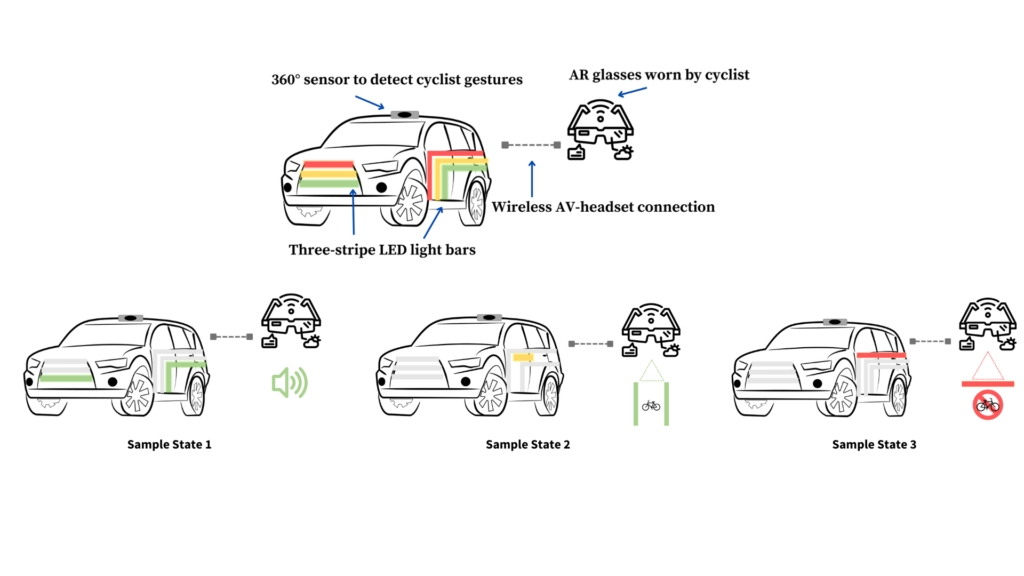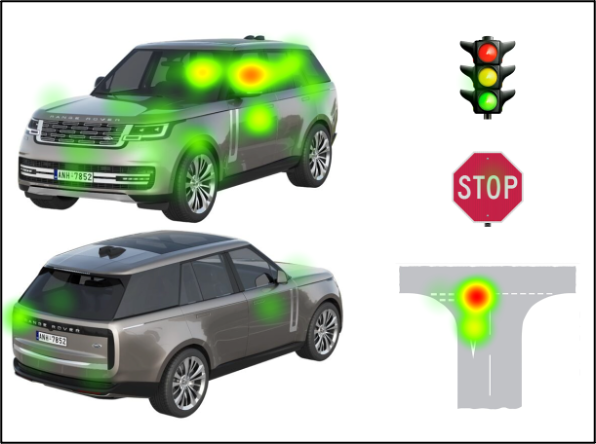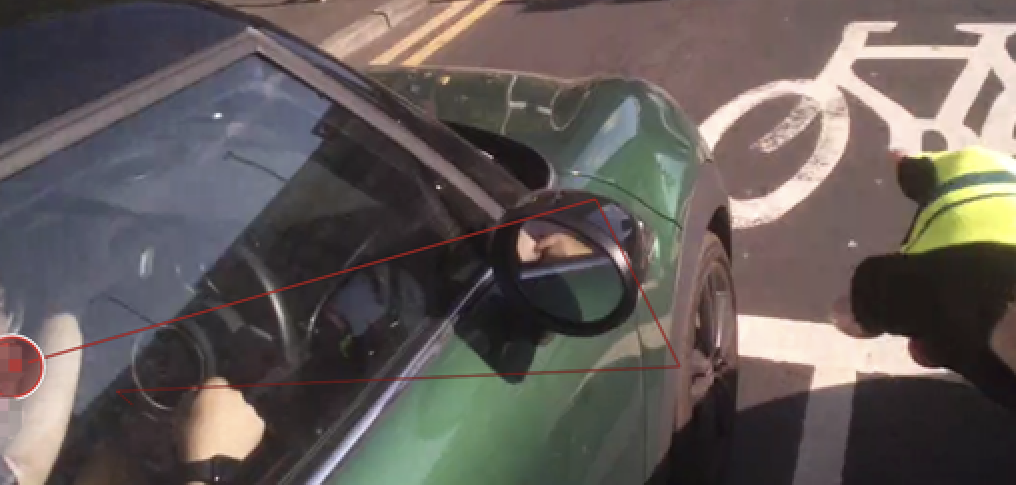Research conducted by human-computer interaction specialists at the University of Glasgow has highlighted the need for new systems in AVs to be capable of replicating social interactions between human drivers and cyclists on UK roads.
The paper, titled Keep it Real: Investigating Driver-Cyclist Interaction in Real-World Traffic, will be presented at the ACM CHI Conference on Human Factors in Computing Systems in Germany this week, and outlines how the university team investigated the ways in which drivers and cyclists directly and indirectly communicate with each other.
Drawing on their findings, the team has outlined a list of recommendations on how AVs should behave around cyclists to ensure a high level of safety, as drivers become less actively engaged in their journeys as autonomous and automotive technology advances.
The team suggests that self-driving cars could signal their intentions in a better way by using displays integrated into the exterior of the vehicle. This could include traffic-light-like colored LEDs on the vehicle’s sides which display animations to signal their next maneuver, helping cyclists to better understand, interpret and react to the AVs next move. The university team says cyclists could also wear smart glasses to deliver information on AVs intentions around them.
“Cars and bikes share the same spaces on the roads, which can be dangerous – between 2015 and 2020, 84% of fatal bike accidents involved a motor vehicle, and there were more than 11,000 collisions,” said Professor Stephen Brewster, professor of human-computer interactions (computing science), School of Computing Science, University of Glasgow, who led the research. “There has been a lot of research in recent years on building safety features into autonomous vehicles to help keep pedestrians safe, but comparatively little on how AVs can safely share the road with cyclists.
 “That’s a cause for concern as AVs become more commonplace on the roads. While pedestrians tend to meet AVs in highly controlled situations like road crossings, cyclists ride alongside cars for prolonged periods and rely on two-way interactions with drivers to determine each other’s intentions.
“That’s a cause for concern as AVs become more commonplace on the roads. While pedestrians tend to meet AVs in highly controlled situations like road crossings, cyclists ride alongside cars for prolonged periods and rely on two-way interactions with drivers to determine each other’s intentions.
“It’s a much more complicated set of behaviors, which makes it a big challenge for future generations of AVs to tackle. Currently, self-driving cars currently offer very little direct feedback to cyclists to help them make critically important decisions like whether it’s safe to overtake or to switch lanes. Adding any guesswork to the delicate negotiations between car and bike has the potential to make the roads less safe.”
Potential solutions were devised following two observational studies of road traffic in and around the city of Glasgow to learn more about interactions between differing road users. A total of 414 separate interactions were observed between cyclists and drivers at five city intersections during busy times of day. The team noted whether riders and drivers were aware of each other occupying adjacent space and how they indicated their next maneuver.
Other aspects including how the road users negotiated who would move first, and how they communicated positive or negative feedback once the maneuver was completed, were also studied.
Additional notes were taken on how hand, arm and head movements, facial expressions and vocal cues were used to communicate intention, in addition to implicit cues such as slowing down or accelerating, and whether car users used their indicators or headlights to communicate.
 The team then equipped 12 volunteer cyclists with eye-tracking glasses and head-mounted video cameras and asked them to bike along their usual commuting route to and from work. On their commute, the glasses recorded where the cyclists were looking, capturing data on their gaze as it touched the road surface, the exteriors and interiors of cars, and road signs and traffic signals.
The team then equipped 12 volunteer cyclists with eye-tracking glasses and head-mounted video cameras and asked them to bike along their usual commuting route to and from work. On their commute, the glasses recorded where the cyclists were looking, capturing data on their gaze as it touched the road surface, the exteriors and interiors of cars, and road signs and traffic signals.
The study found that cyclists relied more regularly on information provided by road signs and traffic signals in areas such as controlled intersections but that they looked at cars more often to gauge drivers’ intentions at situations such as traffic circles, uncontrolled junctions and when navigating road works.
“Taken together, these two studies showcase details of interactions between drivers and cyclists, and how bike riders use their eyes to make decisions about their movements, which haven’t been widely-observed in previous research,” said Professor Brewster. “Over time, these road users have developed a shared language which helps them safely negotiate shared spaces in traffic.
“Being able to identify the ways in which that language works will help guide the development of versatile new methods of communication with cyclists that are easily understandable in any traffic situation, reliably informative, and predictable.”
The team identified several areas which needed to be considered when designing next-generation AVs, including “guidance that the two-way communication present with human drivers should be maintained, allowing active negotiations through arm movements, which could require the development of more sensitive sensors on cars”.
The authors also state that messages from AVs to cyclists “should be timely and visible anywhere around the vehicle, but streamlined enough to avoid overwhelming them with information while they are in motion” and note that “opportunities for positive and negative feedback that regularly occurs between human drivers and cyclists should be maintained wherever possible, to aid designers in gathering data to improve future performance”.
“Just like spoken languages, communication between cyclists and drivers varies from country to country,” said Ammar Al-Taie, a tutor at the University of Glasgow’s School of Computing Science and co-author of the paper. “We’re very conscious that this paper focuses specifically on UK roads – any future developments will need to take into account the differences in drivers’ and cyclists’ interactions across the world.
“However, we hope that this research will be a valuable resource for AV designers to consider new ways that self-driving cars can work safely alongside cyclists by speaking their language, wherever they may be.”
The paper will be published in Proceedings of the 2023 CHI Conference on Human Factors in Computing Systems. The research was supported by funding from the University of Glasgow and the Royal Society of Edinburgh.


